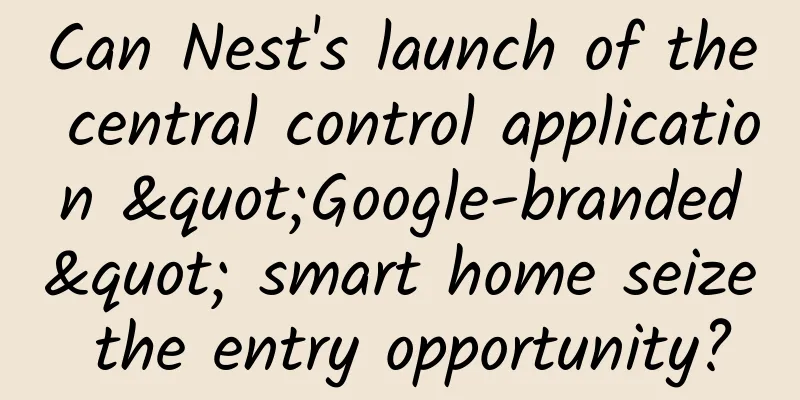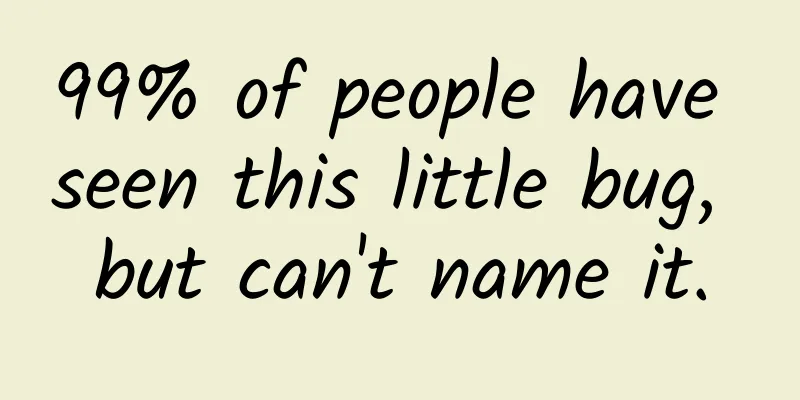Can Nest's launch of the central control application "Google-branded" smart home seize the entry opportunity?

|
Last week, Google's Nest held a press conference in San Francisco to release the new Nest Protect smoke alarm and security camera Nest Cam. Nest, as Google's most valuable product in the smart home field, has not made many new moves in the past year. The security camera released this time can only be regarded as a conventional route in the smart home industry. Just when the outside world is questioning Nest's research and development progress, the Nest application updated at the same time as the new product may have a more far-reaching significance than the product itself. Previously, the Nest thermostat and camera system were controlled by different apps; the new version of the Nest app can achieve unified control of the thermostat, smoke detectors and cameras. This not only means that users can control multiple smart home devices with just one app, but also that these devices can be logically linked. For example, when the new version of Nest Protect detects smoke in the house, it can turn on the camera Nest Cam and turn off the heating system in the house. Therefore, for the entire home system, the new version of the application is equivalent to playing the role of a control center. This move by Google seems to be its own answer to the competition for the entrance to smart homes. Smart home is losing popularity, but usability is a major issue According to a poll released this week by Silicon Valley market research firm Argus, the smart home market has stagnated compared to last year, mainly for the following two reasons. The first reason is that the products are not very practical. Consumers often view these new smart products, such as smart thermostats, smart cameras, smart light bulbs, smart door locks, etc., with a curious mentality, so their enthusiasm often only lasts for five minutes. Therefore, how to make the products more down-to-earth is the primary issue that smart home manufacturers should consider. Second, from more than 6 million comments and posts from consumers on smart home products, Argus found that a large number of consumers have complained that the installation and use of smart home products are too complicated and difficult. Imagine if each smart home product had to be equipped with its own independent application, just like equipping each traditional home appliance with its own remote control, it would be a headache. Integrating these applications together may be a good solution, just like equipping a universal remote control. In any case, a unified control center is probably an inevitable problem in the process of popularization of smart home systems. Using a unified application to solve the smart home entrance or the dispute between Google and Apple From the release of the unified application, we can see that Nest's ambition is not just to make some independent, interconnected smart products, but to build a complete ecosystem. And this ecosystem will be based on a language specifically developed for interconnected devices. Therefore, Nest's previous steady progress in the field of smart home is understandable. Because in the initial stage, the establishment of industry standards is far more meaningful than the release of several small products. From this point of view, for the unified application solution, the independent system background can give the development and promotion of smart home an advantage. In this sense, the competition for the entrance of smart home is just a microcosm of the competition between Android and iOS. It is reported that Google is planning to launch a new IoT operating system called "Brillo" and a communication protocol called "Weave", which can help IoT devices communicate with each other through wireless networks. Similarly, Apple is also promoting its "Homekit" project in this direction. Nest has opened up its product APIs to help external developers control its products. The current debate between Google and Apple in the smart home field is similar to that in many other fields. For developers, if they use Google's technology, at least they can play freely; if they use Apple's technology, they will undoubtedly be strictly constrained in Apple's own ecosystem. Is it necessary to fight for the entrance high ground now? Usually, when we talk about the entrance of smart home, we hope that it is not only a signal connection center, but also a unified control center. Therefore, the entrance of smart home seems to be regarded as the key issue to seize the market opportunity of smart home, and major manufacturers have also made many attempts in this regard. From the perspective of the domestic market, the current solution is mainly through routers, central control hosts and platform access. The first solution is only applicable to home products that use Wi-Fi as a means of communication. It is still difficult to say whether the popularization of smart homes in the future will be achieved through Wi-Fi. The progress of technologies such as Ad-hoc and ZigBee in the field of the Internet of Things is also worth paying attention to. The central control host is usually a solution adopted by traditional electrical appliance companies for intelligent transformation. It is mainly used for complete smart home deployment, with good stability, but high price. There are also some emerging smart home product manufacturers that use open platforms as home control centers. As more home products are connected to them, it remains to be seen whether these platforms can grow into smart home control centers. However, no matter what, the control center is ultimately based on products. Without good product support, even the most powerful central control system is just an empty shell. Judging from the current situation of the smart home market, if manufacturers are simply trying to seize the entrance, such a situation may not necessarily occur. Going back to the Argus Insights report mentioned above, in May this year, consumers' interest in connected home products fell by 15%, and is still declining. On the one hand, the current home products may not really solve the user's pain points; on the other hand, the high price is also a major factor that makes smart homes less affordable. For example, the Nest Cam launched this time is currently priced at US$199.99, and whether consumers recognize that the functions it achieves are worth the price is still a question. Therefore, how to increase the interest of the consumer market and create truly down-to-earth products may be the primary problem to be solved in this field. As a winner of Toutiao's Qingyun Plan and Baijiahao's Bai+ Plan, the 2019 Baidu Digital Author of the Year, the Baijiahao's Most Popular Author in the Technology Field, the 2019 Sogou Technology and Culture Author, and the 2021 Baijiahao Quarterly Influential Creator, he has won many awards, including the 2013 Sohu Best Industry Media Person, the 2015 China New Media Entrepreneurship Competition Beijing Third Place, the 2015 Guangmang Experience Award, the 2015 China New Media Entrepreneurship Competition Finals Third Place, and the 2018 Baidu Dynamic Annual Powerful Celebrity. |
<<: What should “friendly competitors” in the war of words learn from Uber?
>>: Liu Shuwei released a report: LeTV's model is difficult to sustain
Recommend
From 0 to 1, a complete analysis of the key points of APP from launch to promotion
As a newbie in the operation circle, I still don’...
Wear thin clothes under your down jacket to keep warm! A super simple dressing trick, save it now
When winter comes, people who are afraid of cold ...
Electric Technology Car News: Can the cheap and sharp-looking Peugeot 5008 still dominate the large seven-seater market?
The Peugeot 5008 was officially launched in June ...
Is strawberry the “first of all poisons”?
Every year during the strawberry season, some med...
Product application fragmentation increases the difficulty of color TV Internetization
Smart TV products have become a rising star in th...
Paphiopedilum sclerophyllum, a beautiful legend
As a member of the orchid family, Paphiopedilum s...
Screen burn-in is not a problem. Learn about the app that can save AMOLED screens.
Unconsciously, AMOLED screens have been able to c...
Market trends and placement techniques for franchise advertising!
In recent years, the main battlefield of advertis...
Is subsidy really a shortcut to user growth?
This year's Spring Festival, we still enjoy t...
The stove ignited the quilt, 13 people were trapped! How to prevent safety when heating in winter?
Evening of December 27 A fire broke out in a resi...
The most comprehensive paid membership system analysis
In the well-known AARRR model , the membership sy...
Car companies also need to make batteries, so what should power battery companies do?
At present, there is a trend in the automotive in...
Douyin "World Argumentation Champion Big Blue Team" 5-day Douyin online course
Douyin traffic training course video tutorial lect...
A red ocean project with simple operation from zero foundation, a way to make money with a visual feast
A red ocean project with simple operation from ze...









